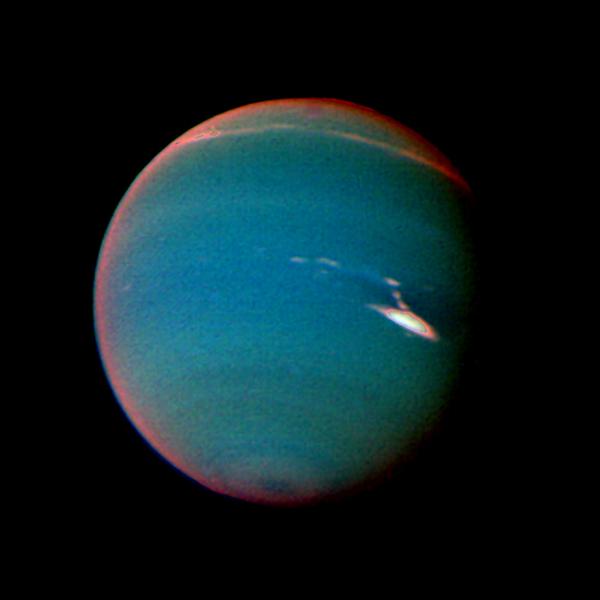
Uranus ‘opens wide’ on a daily basis to let in blasts of solar wind – then it clenches shut again, scientists have claimed. The solar system’s rudest planet has been in the headlines a lot lately, as NASA prepares to probe its gassy depths. Scientists from the Georgia Institute of Technology reviewed data from the Voyager 2 spacecraft, which sped past the planet more than 30 years ago.
The study suggests that Uranus’ magnetosphere, the region defined by the planet’s magnetic field and the material trapped inside it, gets flipped on and off like a light switch every day as it rotates along with the planet.

It’s ‘open’ in one orientation, allowing solar wind to flow into the magnetosphere; it later closes, forming a shield against the solar wind and deflecting it away from the planet. ‘Uranus is a geometric nightmare,’ said Carol Paty, the Georgia Tech associate professor who co-authored the study.
‘The magnetic field tumbles very fast, like a child cartwheeling down a hill head over heels. When the magnetized solar wind meets this tumbling field in the right way, it can reconnect and Uranus’ magnetosphere goes from open to closed to open on a daily basis.’
Magnetic reconnection is one reason for Earth’s auroras. Auroras could be possible at a range of latitudes on Uranus due to its off-kilter magnetic field, but the aurora is difficult to observe because the planet is nearly 2 billion miles from Earth. The Hubble Space Telescope occasionally gets a faint view, but it can’t directly measure Uranus’ magnetosphere.

The researchers say learning more about Uranus is one key to discovering more about planets beyond our solar system. ‘The majority of exoplanets that have been discovered appear to also be ice giants in size,’ said Xin Cao, the Georgia Tech Ph.D. candidate ‘Perhaps what we see on Uranus and Neptune is the norm for planets: very unique magnetospheres and less-aligned magnetic fields.
Understanding how these complex magnetospheres shield exoplanets from stellar radiation is of key importance for studying the habitability of these newly discovered worlds.’
NASA’s Voyager 2 spacecraft flew closely past distant Uranus, the seventh planet from the Sun, in January 1986. At its closest, the spacecraft came within 81,500 kilometres (50,600 miles) of Uranus’s cloudtops on January 24, 1986. Voyager 2 radioed thousands of images and voluminous amounts of other scientific data on the planet, its moons, rings, atmosphere, interior and the magnetic environment surrounding Uranus.

Since launch on August 20, 1977, Voyager 2’s itinerary has taken the spacecraft to Jupiter in July 1979, Saturn in August 1981, and then Uranus. Voyager 2’s next encounter was with Neptune in August 1989. Both Voyager 2 and its twin, Voyager 1, will eventually leave our solar system and enter interstellar space.
Voyager 2’s images of the five largest moons around Uranus revealed complex surfaces indicative of varying geologic pasts. The cameras also detected 10 previously unseen moons.

Several instruments studied the ring system, uncovering the fine detail of the previously known rings and two newly detected rings. Voyager data showed that the planet’s rate of rotation is 17 hours, 14 minutes. The spacecraft also found a Uranian magnetic field that is both large and unusual. In addition, the temperature of the equatorial region, which receives less sunlight over a Uranian year, is nevertheless about the same as that at the poles.
Via Metro
